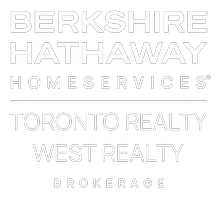3 Government Changes You Should Know About
The real estate landscape is constantly evolving, and recent government changes have introduced new opportunities and benefits for buyers, homeowners, and investors in Canada. If you're planning to buy, refinance, or expand your property portfolio, it’s essential to understand these updates. Here are three key changes that could impact your real estate decisions:
1. New CMHC Guidelines for Insured Mortgages
As announced on September 16, 2024, the federal government is expanding eligibility for 30 year amortizations for insured mortgages to all first-time homebuyers and all purchasers of new builds, and increasing the $1 million price cap for insured mortgages to $1.5 million, effective December 15, 2024.
Key Changes to CMHC Mortgage Rules:
Increased Insured Mortgage Cap: The $1 million price cap for insured mortgages has been increased to $1.5 million, effective December 15, 2024, to reflect current housing market realities.
Expanded Eligibility for 30-Year Amortizations: All first-time homebuyers and buyers of new builds will be eligible for 30-year mortgage amortizations, starting December 15, 2024.
Impact: These new guidelines mean that more Canadians can access more of the housing market with lower down payments and manageable monthly payments. If you’re a first-time homebuyer or looking to enter the market, these updated guidelines could improve your chances of securing a mortgage and finding your dream home.
2. CMHC Secondary Suites Financing Program – Loans Up to $2 Million
Many homeowners have extra space they may want to convert into rental suites, such as an unused basement, or a garage that could be converted into a laneway home. Historically, the cost of renovating, combined with municipal red tape, has made this both difficult and expensive.
Key Updates to CMHC Loan Program:
Maximum Property Value Limit: The “as improved” value of the eligible residential property against which the loan is secured must be less than $2 million.
Maximum Loan-to-Value limit: Up to 90 per cent of the property value, including the value added by the secondary suite(s), in combination with any other outstanding loans secured by the property.
Maximum amortization: 30 years.
Additional Details: The project financing must not exceed the project costs. The cost of construction needs to be covered up from by the property owner and will be reimbursed on project completion.
Impact: This program is a game-changer for homeowners looking to build wealth, offset cost of living and maximize the value of their property. Whether you’re an investor, current homeowner, or buyer looking for an income-generating property, this financing vehicle makes it easierier than ever to add rental spaces, build generational wealth, and make homeownership more financially feasible.
3. Mortgage Renewal Without Requalifying with a New Lender
When a homeowners mortgage term is complete, they typically renew their mortgage for a new term at a new rate. Historically this process did not require the homeowner to requalify for the new loan, so long as they remained with the same lender. If they wished to "shop" for a better product, it required that they requalify should they move to a new lender - a process that could be daunting, and often times impossible. That has all changed under the new mortgage renewal guidelines eliminate the need for requalification when moving to a new lender, making it easier to shop for better rates and terms without the hassle of reassessment.
Impact: “When consumers renew their mortgages, their ability to switch to a competitive mortgage offer is critical to ensure they obtain the best rate and terms to serve their needs,” the Competition Bureau said in a submission to the Department of Finance, noting that the share of uninsured mortgages has been growing, climbing to 73 per cent by mid-2023.
These three government changes are designed to make homeownership, renewing financing, and investing in income producing properties easier and more accessible. Whether you’re a first-time buyer, homeowner, or property investor, staying informed about these updates can help you make more strategic real estate decisions in 2024 and beyond.
2024 Fall Market Predictions
To understand where the real estate market in the Greater Toronto Area (GTA) might be headed, it's crucial to first examine where it has been.
Prior to 2022, the Toronto Real Estate Board recorded only two years in the past two decades where sales volumes fell below 80,000: in 2008 and 2018. Over this period, annual transaction volumes averaged just under 90,000, with a low of 74,500 in 2008 and 78,000 in 2018. However, the last three years have seen an unprecedented drop in yearly transactions, with 75,000 in 2022, 66,000 in 2023, and a projected pace of 63,000 for 2024.
The decline in sales volume began concurrently with the Bank of Canada's initial rate hike in 2022, indicating a strong correlation between interest rate changes and market activity.
So, what lessons can we learn from past trends, and what do they suggest about the months and years ahead?
The 2008 market downturn was driven by the global financial crisis. The stock market crashed, unemployment surged, access to financing tightened, and consumer confidence plummeted. In January 2008, the Bank of Canada initiated a series of interest rate cuts, reducing the overnight rate from 4.5% to 4.25% (coincidentally the current rate is also 4.5%). Although these cuts took time to influence the market, by 2009, the overnight rate had dropped to 1%, and real estate transaction volumes and prices began to rise.
Similarly, 2018 was marked by shifting interest rates. After several years with a 0.5% overnight rate, the Bank of Canada began raising rates in July 2017, peaking at 1.75% by the end of 2018. Additionally, 2018 introduced the mortgage “stress test” for uninsured mortgages, significantly affecting buyers' purchasing power. This combination of the stress test and rising rates put short-term downward pressure on the market. Unlike in 2008, the rebound in sales in 2019 wasn't driven by a reduction in interest rates but rather by a pause in rate hikes and consumer adjustment to the stress test.
These examples highlight clear parallels to today’s market, where changes in mortgage and interest rates correlate with reduced sales volumes. However, unlike 2008 and 2018, today's market is experiencing higher inventory levels.
In 2008 and 2018, new listings actually decreased from the prior year and continued to decline the following year. This decrease in inventory put upward pressure on prices and tempered what could have been an even stronger rebound in sales transactions.
In contrast, new listings in 2024 have increased every month compared to 2023. This rise in inventory is exerting downward pressure on prices, particularly in the condo market. When you combine the current inventory levels, downward pressure on prices, and ongoing interest rate cuts, the evidence points to a strong rebound in sales volume in 2025.
“With another rate cut announced on July 24, we’ve now seen two rate cuts in a row, and the expected pace of future policy easing has steepened considerably, with markets now anticipating rate cuts at every remaining Bank of Canada decision this year,” said Shaun Cathcart, CREA’s Senior Economist. “Combine that with a record amount of demand waiting in the wings, and the forecast for a rekindling of Canadian housing activity going into 2025 has just gone from a layup to a slam dunk.”
In summary, given the historically low sales transactions over the past three years, pent-up buyer demand is at record levels. With interest rates almost certain to decrease significantly, combined with currently elevated inventory levels, transaction volumes are likely to increase substantially in the short to medium term. As for pricing, inventory levels for different property types will ultimately determine price trends. Condos may see prices remain flat or slightly decrease in the short term, while houses and townhouses are likely to see price increases driven by rate reductions and strong demand.
The missed opportunity in today’s market.
Toronto's real estate market is facing a unique challenge - a gap between older sellers and younger buyers. This gap is rooted in the differing priorities and circumstances of these two generations, leading to a mismatch in the housing market.
Older Homeowners: No Desire to Modernize
Many older homeowners in Toronto are reluctant to modernize their properties, and it's not just about the cost. They often lack the desire, connections, and will to renovate, preferring to maintain their homes as they are. Additionally, many older homeowners may not qualify for loans without a steady income, making renovations a financial burden.
Here are some potential reasons why older homeowners might be hesitant to modernize their properties:
Emotional attachment: Older homeowners may have an emotional attachment to their homes and the memories they've made there. They may feel that renovating would erase those memories or change the character of their home.
Lack of knowledge: Older homeowners may not be familiar with the latest design trends, technologies, or building materials, which can make the renovation process seem overwhelming.
Fear of disruption: Renovations can be disruptive and chaotic, especially for older adults who value their routine and quiet lifestyle.
Physical limitations: Older homeowners may have physical limitations that make it difficult for them to manage a renovation project, such as mobility issues or chronic health conditions.
Social isolation: Older adults may be socially isolated, which can make it harder for them to connect with contractors, designers, and other professionals who can help them with renovations.
Financial constraints: As you mentioned, many older homeowners may not qualify for loans without a steady income, making renovations a financial burden.
Prioritizing other expenses: Older adults may have other financial priorities, such as healthcare expenses, travel, or supporting family members, that take precedence over home renovations.
Lack of trust: Older homeowners may be hesitant to trust contractors, designers, or other professionals with their home and their money.
Younger Buyers: Stretching Themselves Thin
Younger buyers in Toronto are eager to find modern and renovated homes, but they're already stretching themselves financially with down payments and mortgages. They may not have the means to fund renovations through other loans, and their busy lives with long work schedules and family responsibilities make it difficult to take on the added stress of renovations.
Here are some potential reasons why younger buyers in Toronto may be hesitant to take on renovations:
Financial strain: Younger buyers may be already stretching themselves financially with high down payments and mortgages, leaving them with limited funds for renovations.
Lack of additional savings: They may not have enough savings to cover the costs of renovations, which can be a significant expense.
High debt-to-income ratio: Younger buyers may have high debt-to-income ratios, making it difficult for them to qualify for additional loans or credit to fund renovations.
Busy lives: They may have demanding work schedules and family responsibilities, leaving them with limited time and energy to manage a renovation project.
Lack of expertise: Younger buyers may not have the necessary expertise or experience to manage a renovation project, which can be overwhelming and stressful.
Fear of the unknown: They may be hesitant to take on renovations because they're unsure of the costs, timelines, and potential surprises that can arise during the process.
An Opportunity for the Willing and Able
This gap in the market creates an opportunity for those who are willing and able to renovate a home.
For sellers, making the effort to update at least part of the home, can generate a significant return on investment. Redoing a roof, replacing windows, updating electrical or improving a kitchen or bathrooms are all investments that a potential buyer will not have to make out of their own pocket (as opposed to included in a mortgage). This will make the property significantly more attractive to a larger pool of buyers.
For buyers, properties that need more work can be purchased at better prices with less competition. For those who can see beyond the cosmetic issues and envision a modern and renovated space, this gap presents a chance to own a dream home at a more affordable price.
Here are some potential benefits for those who are willing and able to purchase a home that needs to be renovated:
Affordable prices: Properties that need more work can be purchased at lower prices, making them more affordable for buyers.
Less competition: There may be less competition for properties that need more work, making it easier for buyers to purchase the home they want.
Customization: Buyers can customize the property to their liking, creating a modern and renovated space that suits their needs and tastes.
Potential for profit: Renovating a property can increase its value, providing a potential profit for buyers who decide to sell in the future.
Personal satisfaction: Renovating a property can be a fulfilling experience, allowing buyers to create a home that reflects their personality and style.
Overall, the gap in the market between older sellers and younger buyers presents an opportunity for those who are willing and able to renovate a home. By capitalizing on this gap, both buyers and sellers can benefit from being bold and proactive.

BHHS Toronto
Phone:+1(416) 504-6133



